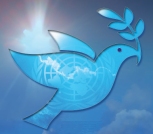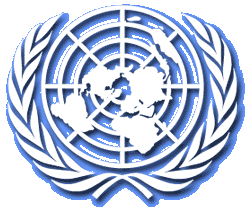News, March 2008
|
Editorial Note: The following news reports are summaries from original sources. They may also include corrections of Arabic names and political terminology. Comments are in parentheses. |
40 years on, Israelis continue to deny Palestinians fair share of their water resources
40 years on, Israel maintaining unequal distribution of water
Date: 23 / 03 / 2008 Time: 12:02
Bethlehem – Ma'an –
Over the course of more than 40 years of the
Israeli occupation of the Palestinian territories, the Israeli
occupation government has maintained a drastically unequal distribution
of vital water resources between Israelis and Palestinians, who draw on
the same finite water sources in the arid Middle East.
While more spectacular forms of violence grab the headlines, water has
emerged as a paradigmatic example of those effects of occupation that
take place over the slow course of bureaucratic time, denying, each day,
the human rights of Palestinians living under occupation. On the
occasion of United Nations World Water Day, Ma'an compiled this report
about the water situation in the occupied territories.
According to Ayman Rabbi, the head of the Palestinian Hydrology Group,
the water issue boils down to a basic question of justice. "We are
calling for equality, at least in terms of water allocation," he said.
"[Water] is essential for everyone regardless of race and religion."
The Israeli human rights organization B'Tselem estimates that
Palestinians in the West Bank and the Gaza Strip use just 22 cubic
meters a year, or 60 liters per person per day. By contrast, Israelis
(both settlers and residents of Israel "proper") use up to 120 cubic
meters per capita per day, or about 330 liters per person a day, or
about five and a half times what Palestinians use.
The reason, experts say, is discriminatory allocation of resources, an
overall situation of inequality that has not improved with the beginning
of the Palestinian-Israeli peace process in the early 1990s.
Palestinians and Israelis both draw on the vast Mountain Aquifer, 85% of
which lies under the West Bank. Israel has managed to drill wells, both
within Israel and in settlements in the West Bank, that tap the
productive sections of the aquifer. Israel has also limited
Palestinians' access to this source by allowing the construction of
virtually no new wells in Palestinian areas of the West Bank.
An organizer with the water advocacy organization Life Source said that
12 new wells have been drilled in the Eastern Aquifer since the
beginning of the Oslo peace process. Ayman Rabbi estimates that another
26 wells have been lost behind Israel's West Bank separation barrier.
In order to drill a new well, Palestinians must first apply to the Joint
Water Committee (JWC) a body set up by the Interim Agreement, also known
as Olso II, signed by Israel and the Palestinian Authority in 1995.
While there are an equal number of Palestinians and Israelis on the
Committee, Israel maintains veto power.
If Palestinians want to drill a new well in Area C, the zones where
Israel, under the Oslo accords, maintains full civil and military
control, the Civil Administration, a branch of occupation authority,
must also approve the construction.
By the estimation of B'Tselem and other organizations, Area C is home to
some 215,000 Palestinians who are still not connected to any running
water system, and therefore must rely on water that is imported on
trucks at four times the ordinary cost.
In addition, the Palestinian Hydrology group estimates, Palestinians buy
water from Israeli sources, especially the Mekorot, the Israeli national
water company. Because the water comes from Israel, Israel could, as a
tactic of war, curtail or potentially shut off the supply of water.
Asked if Israel could shut off water to the West Bank, similar to the
way in which the Israel military has blockaded the Gaza Strip, Ayman
Rabbi says, "what we are facing now is somewhat similar [to Gaza]."
While Israel may not completely turn off the spigot to the West Bank,
Rabbi says that "intermittent supply [of water in the West Bank] is
getting reduced rapidly."
Gaza
If the water situation in the West Bank is bad, the Gaza Strip is facing
what Rabbi calls "a disastrous situation."
As a result of the 1995 Interim Agreement, the Palestinians in the Gaza
Strip do have a degree of sovereignty over the Strip's water resources.
Yet, experts, say, these resources are inadequate. "Other than the small
quantity that Israel undertook to sell," B'Tselem says, "residents of
the Gaza Strip will have to meet their needs solely from resources
located within its borders, i.e., they are not allowed to obtain water
from the West Bank."
"The failure of the Interim Agreement to re-distribute the water
resources shared by the West Bank and Israel prevented any 'surplus' of
water in the West Bank that could increase the supply of water to the
Gaza Strip. As a result, the severance of the Gaza Strip and the West
Bank continued, further damaging the Gaza Aquifer because of the
necessity to continue the over-extraction," B'Tselem reports.
The result is that the Gaza Strip's 1.5 million residents have to choice
but to over-extract from the coastal aquifer, rendering most of the
supply salty, brackish, or contaminated. Before the beginning of the
blockade, the Life Source organizer says, less than 10% of Gaza's water
supply met international standards for drinking water.
Now, virtually none of the supply meets those standards.
"Alan Johnston, the BBC corresponded kidnapped in Gaza, related in an
interview that at a relatively early stage, he started suffering from
all kinds of aches because of the water he drank," wrote Amira Hass in
Haaretz. "This was the same water that the kidnappers drank, but
Johnston's unaccustomed body sent warning signals: This is not water
that is fit for drinking."
Israel imposed a total lockdown on the Gaza Strip last June that is
still in effect today. Among the many goods that are no longer allowed
into the Strip are construction materials needed to repair the crumbling
water infrastructure. Because of Israel's cuts in vital fuel supplies,
and the resulting cuts in electricity, the Gaza Coastal Municipalities
Water Utility is forced to pump 60,000 cubic meters of raw sewage into
the ocean, compared to just 20,000 before the imposition of the Israeli
blockade.
Last March, a massive sewage cesspit used for storing waste that Gaza
did not have the infrastructure to treat, overflowed, killing two
children and three women in the village of Umm Nasser. Because of the
blockade, no improvements have been made to the sewage treatment system.
The United Nations fears that another sewage flood could result.
Fair Use Notice
This site contains copyrighted material the use of which has not always been specifically authorized by the copyright owner. We are making such material available in our efforts to advance understanding of environmental, political, human rights, economic, democracy, scientific, and social justice issues, etc. We believe this constitutes a 'fair use' of any such copyrighted material as provided for in section 107 of the US Copyright Law. In accordance with Title 17 U.S.C. Section 107, the material on this site is distributed without profit to those who have expressed a prior interest in receiving the included information for research and educational purposes. For more information go to: http://www.law.cornell.edu/uscode/17/107.shtml. If you wish to use copyrighted material from this site for purposes of your own that go beyond 'fair use', you must obtain permission from the copyright owner.
|
|
|
|
||
|
||||||


